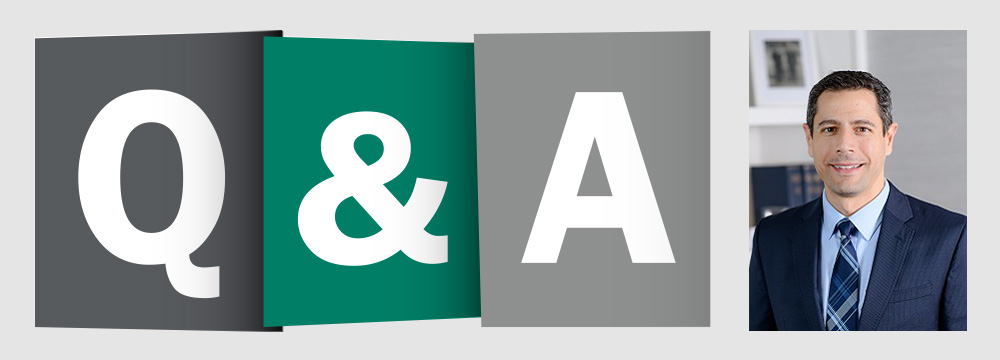
Drug shortages drag on
Almost all hospital pharmacists reported facing drug shortages in a recent survey, but there are some available solutions, one expert says.
During the pandemic, shortages of needed items were a common occurrence for everyone. For most of us, the situation has gotten much better, but for hospital pharmacists, not so much.
Over 99% of pharmacists surveyed by ASHP, the American Society of Health-System Pharmacists, this summer said they were encountering drug shortages. The survey, which gathered responses from 1,123 members of the organization, was particularly focused on chemotherapy medications and found that 57% of respondents said shortages of these drugs had a critical impact on their patients.
Other categories of drugs where shortages had at least a moderate impact for more than half of the pharmacists included corticosteroids and hormonal drugs, oral liquids, crash cart drugs, drugs used in the ICU and OR, and antimicrobials. The shortages were also expected to be costly, adding between 6% and 20% to the drug budgets of 73% of respondents.
To learn more about the situation and potential solutions, ACP Hospitalist recently spoke to Michael Ganio, PharmD, MS, BCPS, senior director of pharmacy practice and quality for ASHP, which is based in Bethesda, Md.
Q: What would you want hospitalists in particular to know about drug shortages?
A: I think at this point, most physicians are aware that drug shortages are a thing, but pay attention to the communication that's coming out. When you see that a drug is in short supply, and then there's a recommended alternative, understand that's probably the best option available. It's not because the hospital or the pharmacy is trying to ration care by choice. There's a reason for these restrictions, to stretch it as long as possible. In the case of these oncology shortages, we still don't have an idea of how soon full supply recovery will be. It may look like there's a lot of days' supply on hand for a drug, or it may seem like some of the restrictions are extreme, but a lot of times we don't have that knowledge of exactly how long the shortage is going to last.
In a survey that we did last year we found that drug errors were sometimes attributed to drug shortages. Recognize, especially if you're directly administering drugs, that the concentration or the size of a vial may be different. Double-check the label to reduce the risk of error.
Q: Do you regularly survey pharmacists about drug shortages?
A: We do it in response to certain circumstances. Unfortunately, the circumstances tend to recur. We surveyed last spring on injectable drug shortages and emergency medications. Throughout COVID, we were surveying on some of the COVID drugs that are used in intensive care units and [personal protective equipment]. We survey periodically, and it's usually because of some event or sequence of events that have occurred that have put pressure on the drug supply chain.
Q: What motivated this latest survey?
A: Primarily the oncology drug shortages. There are some chemotherapy drugs that have been in short supply for most of the year and we have been seeing a lot more interest from Congress, from the FDA, from the White House on addressing these so [we did the survey] to have more objective information to provide. … We took the opportunity to also measure some other drugs that we know are in short supply, like ADHD [attention deficit/hyperactivity disorder] medications or a few other critical care medications that are probably a little less well known. We wanted to get a sense of how impactful the oncology drug shortage is.
Q: What surprised or stood out to you in the findings?
A: I wasn't surprised, but it still stood out that nearly 100% reported managing shortages—not surprising [to me], but perhaps more eye-opening to the public. The number who reported delaying and canceling or rationing care for chemotherapy—again, not really surprising, but still quite a remarkable response to know that patients are being affected to that degree. Normally, within a pharmacy we can manage shortages so there's no clinical impact on the patient.
Q: How do pharmacists typically do that?
A: Strategies we use to manage shortages include sourcing from alternative providers or suppliers, buying off-contract, buying from a 503b outsourcing facility. We can source different concentrations, different vial sizes, different bottle sizes. It's when we can't that you start to see clinical interventions, and it's not always easy—reducing the dose to try and stretch your supply further or switching a patient to a different regimen.
The ADHD meds, I've been comparing—because it's a demand-increase shortage—to the amoxicillin shortage we saw last winter because of the rise in respiratory infections. For a one-time prescription for an antibiotic, it's a headache to try to find it or to get an alternative, but once you have it, you're treated. The ADHD meds are very difficult to substitute. If you do transition from a current treatment to one that may be more available, it can take months to find that right dose and to see if the drug is going to take effect. Getting prescriptions filled for ADHD medications can be a monthly struggle.
Q: What else did the survey show?
A: We went into some different questions that we've not done before around how much increase in your budget do you anticipate [due to drug shortages]. The strategies we used to manage shortages … can mean more expensive prices for the drugs. And then looking at how important quality in drug manufacturing is to our members. We know that it's one of the causes of drug shortages: There's a lack of market incentive to invest in quality, and there's no market response to quality. The interesting thing was that a majority of our respondents were willing to invest more in some objective measure of quality. … This is the first time we've measured, “Is the market willing to respond?” and the answer is yes, so that was a significant finding for us.
Q: Could you explain more about the possible causes of shortages?
A: There are a few different causes. Some of the highest-profile shortages right now are not the norm—the ADHD meds, the weight loss medications that have been making a lot of headlines, aren't necessarily from a manufacturing issue. It's just increase in demand. Amoxicillin was another.
Many times it's a manufacturing quality issue. It doesn't mean that drugs themselves are of poor quality. I don't want the public to be worried about what they're receiving. In the oncology drug shortage I mentioned, there was an inspection of a facility toward the end of 2022, with very concerning findings on quality controls, that's leading to the shortages. The FDA was supervising third-party lab testing of products that had not yet been released, and they are all being released, so the product itself was of suitable quality. … But something was leading to an interruption in manufacturing. It could be equipment, it could be processes, things that need to be, for whatever reason, stopped and addressed.
Q: What would you like to see happen to improve this issue?
A: The FDA, of course, has some things that they can do. For example, in 2020, the CARES Act included provisions that would require manufacturers to report what they're making, where they're making it, how much they're making that's coming to the U.S. That has not yet been implemented, but it would be a lot easier to recognize our vulnerabilities when we know exactly how much is coming from which facility and where their suppliers are getting the active ingredients.
There was a proposal as far back as at least 10 years ago to develop some sort of quality rating. Right now when we buy a drug in the hospital, [we ask] “Is it on our contract for the group purchasing organization? Is it available? What's the price?” and that's it. It doesn't leave a lot of room or incentive to invest in quality. We feel like we need to see some sort of rating system that gives purchasers more information.
A few other ideas. One would be stabilizing the market with longer-term contracts, especially if this was done on the federal government level: the Department of Defense, the VA, the Bureau of Prisons, Indian Health Service. … Another reason for not investing in quality would be that a manufacturer doesn't know if that facility is going to be making that specific drug for another two years, three years, because of the contracting process.
Also, we're in the thick of hurricane season. In 2017, Hurricane Maria really devastated Puerto Rico and manufacturing there. Just a couple of months ago we saw Rocky Mount, North Carolina, had a tornado, and Pfizer has a major production facility there. Disruption isn't always stemming from a quality problem, and so one of our recommendations is to support the buildup of buffer inventory. A stockpile I think of as something that sits in a warehouse and collects dust. This would be a buffer supplying three to six months of certain essential medicines and just rotating through it the way that a wholesaler normally rotates supply. Subsidize managing three to six months of that inventory, at least for specific medications that are deemed to be essential, and that would provide time for manufacturers to respond in the event of an emergency, whether it's a hurricane, tornado, or some geopolitical issue.
Q: Are you seeing progress on this front?
A: Yes. There are a few proposals that are getting at the quality issue—some bills that might subsidize manufacture of essential medicines, for example, through grants or a forgivable loan program. These loans or grants would incentivize adoption of new manufacturing technologies that are a little more reliable, more scalable, and can quickly ramp up production in the event of an emergency. They would come with requirements to be transparent about quality. So there is some movement there, but they're still not getting directly at the heart of the matter.



